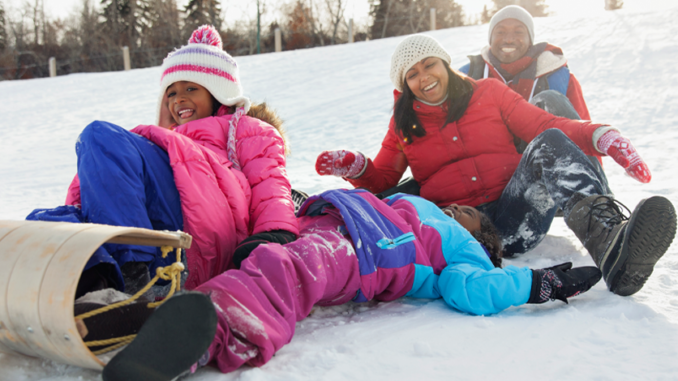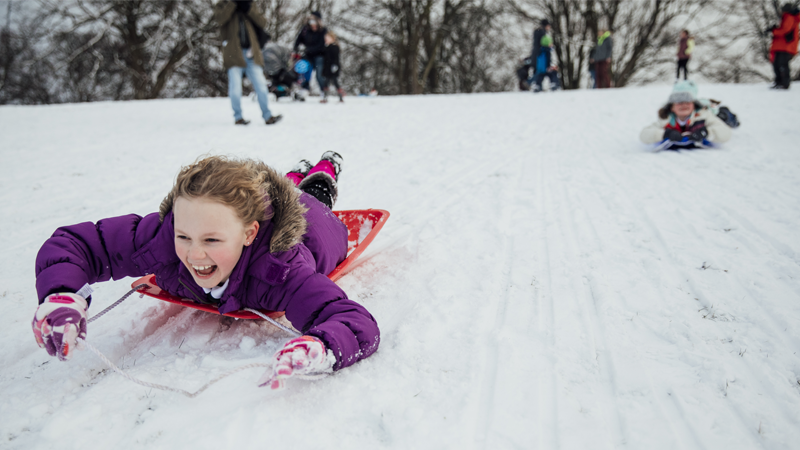
By Ken Sturtz
Zooming down a snow-covered hill on a sled can be exhilarating. If you want to be a sledding hero this winter follow these tips to create a first-rate sledding hill.
Think Safety First
Parental supervision is a must, especially for younger children. Stay away from sledding near roads as well as frozen lakes, streams and ponds. If you’re going to be sledding on some big hills and getting some serious speed, it’s worth thinking about wearing a helmet. At the very least you’ll want to make sure your sled is in good working order. Sleds that can be controlled with a steering device are a good idea.
Selecting the Hill
Unless you know someone with construction equipment, building your own hill probably isn’t feasible. Look for a hill on your property (or, if you have permission, a neighbor’s) that is open and gently sloping. Too steep and you’ll lose control, too flat and you aren’t going anywhere. A level area at the bottom is helpful for safely stopping. You may have to cut down a few trees to make room. Before it snows check for any holes or obstructions, such as rocks or fence posts, that might be an issue
Snow and Sleds
It’s possible to sled on all kinds of snow, but for best results wait until it snows when it’s warmer out, preferably just below freezing. That tends to produce wetter, heavier snow. This kind of snow is good for sledding because it reduces friction by releasing water when under the pressure of a heavy sled. That helps you speed down the hill. Plus, who wants to go sledding when it’s bitter cold out?
From the classic to the modern, there are sleds of every variety available and most of them can provide a good experience under the right conditions. Experiment with several kinds to find one you prefer. If you’re looking for speed (and don’t mind plunking down some cash) you might try L.L. Bean’s Sonic Snow Tube, which is highly rated. It features a hard-shell bottom that cuts down on drag and performs well on all kinds of snow. It even comes with a tow handle. The downside, other than the price, is that it’s difficult to steer.
Add a Tow Rope
Call it laziness, but it can get tiring trudging back up a hill after each ride down. Remedy this problem by installing a tow rope. If you’re not mechanically inclined, you’ll need to recruit some help but the basics are fairly straightforward. You need an electric or gas motor at one end of the hill and a return pulley at the other. The system turns a long rope and gives everyone a free ride up the hill. The system needs to be anchored at each end, which is something to think about before cutting down trees on your hill. How much rope and exactly what kind of motor you’ll need depends on the individual circumstances. Given the amount of tinkering involved you’ll want to start well before the snow flies.
